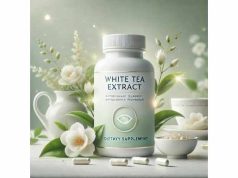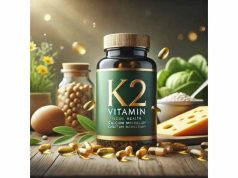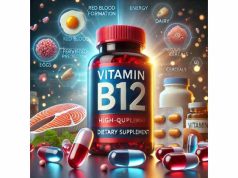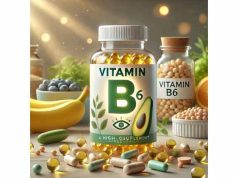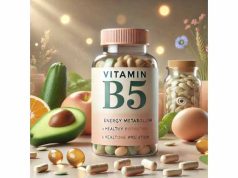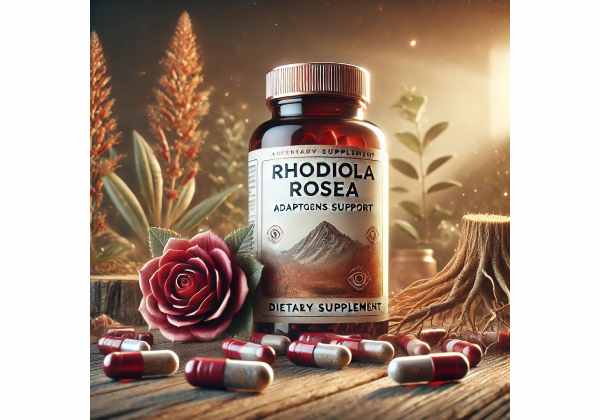
Rhodiola Rosea, often called the “golden root,” has garnered significant attention for its adaptogenic qualities—helping the body cope with stress, supporting energy levels, and fortifying overall resilience. Now, a growing body of inquiry also points to its surprising potential for enhancing vision. By shielding delicate eye tissues from oxidative stress and assisting in healthy circulation, Rhodiola Rosea may play a complementary role in maintaining optimal eyesight. In this comprehensive article, we delve into how this revered herb operates, the ways it may reinforce visual function, and practical methods to incorporate it into your regimen for stronger, clearer eyes over the long haul.
Table of Contents
- Rhodiola Rosea: A Look at Its Origins and Characteristics
- Rhodiola Rosea’s Role in Promoting Sharper Eyesight
- Notable Advantages of Rhodiola Rosea for Vision Wellness
- Effective Approaches for Incorporating Rhodiola Rosea
- Evidence-Based Findings and Current Explorations
- Frequently Asked Questions About Rhodiola Rosea
- References and Sources
Rhodiola Rosea: A Look at Its Origins and Characteristics
Native to high-altitude, cold regions of Europe, Asia, and North America, Rhodiola Rosea is a hardy flowering plant that thrives in harsh climates. For centuries, traditional medicine systems have utilized its roots to help enhance stamina, reduce fatigue, and promote physical and mental balance. Contemporary supplements most often contain extracts from these roots, which house diverse bioactive constituents.
Traditional Foundations
- Folk Utilization: In regions like Siberia and Scandinavia, indigenous communities consumed Rhodiola to endure frigid winters, improve mood, and bolster work capacity.
- Integration into Modern Wellness: Over the last few decades, adaptogens like Rhodiola Rosea have entered mainstream attention for stress management, partly owing to the scientific push to uncover their mechanisms in combating modern stressors—ranging from psychological tension to environmental pollution.
Core Phytochemicals
Primary active molecules within Rhodiola Rosea include:
- Rosavins (rosavin, rosin, rosarin): Generally singled out in standardized extracts.
- Salidroside: Demonstrated potent antioxidant effects.
- Tyrosol: A phenol also linked with protective properties.
- Flavonoids and Organic Acids: Providing further potential for antioxidation and metabolic support.
These compounds collectively give Rhodiola its adaptogenic identity. They may help stabilize endocrine responses, reduce cortisol surges, and shield cells from oxidative injury—a synergy that extends positive implications for ocular tissues as well.
Role in Contemporary Health
Thanks to these broad-spectrum effects, people often use Rhodiola Rosea for:
- Stress relief
- Mood elevation
- Cognitive clarity
- Physical endurance
In recent times, researchers have begun linking adaptogens with Eye Health, hypothesizing that antioxidant and circulation-promoting actions could reinforce and preserve vision. While more specific investigations are needed, preliminary signals point to potentially noteworthy benefits for those striving to keep their eyes healthy.
Rhodiola Rosea’s Role in Promoting Sharper Eyesight
Vision is a complex interplay of neural pathways, photoreceptor cells, and supporting blood vessels. Various stressors—including oxidative radicals, inflammation, or insufficient nutrient supply—can degrade this intricate system. Rhodiola Rosea may mitigate or offset several of these detrimental factors, lending it a unique position in comprehensive ocular support.
1. Reinforcing Antioxidant Defenses
The retina and lens are exceptionally vulnerable to free radical assaults. Unchecked oxidative stress damages proteins in the lens (leading to cataracts) and wears down photoreceptors (contributing to macular degeneration). Salidroside and other rhodiola constituents can mop up reactive oxygen species (ROS), potentially slowing these harmful cascades.
2. Enhancing Microcirculation
Healthy eyesight hinges on robust blood flow that delivers nutrients and oxygen while removing metabolic waste. Initial studies suggest that Rhodiola may encourage endothelial function, stimulating vasodilation and improved blood vessel flexibility. As a result, ocular tissues could receive more consistent nourishment, reducing risk for ischemic or degenerative issues.
3. Managing Inflammatory Responses
Chronic low-grade inflammation is a hidden driver of many eye disorders—from dryness to serious degenerative conditions. By modulating pro-inflammatory cytokines and stress hormones like cortisol, Rhodiola could help maintain an environment less conducive to tissue breakdown. The net outcome: less ocular irritation and fewer inflammatory triggers for progressive damage.
4. Potential Neuroprotection
The optic nerve and retina are integral parts of the central nervous system, meaning they rely on stable neurotransmission and protected neurons. Some data indicates that adaptogens like Rhodiola Rosea might defend neuronal structures against stress or excitotoxic damage, thereby preserving the nerve pathways essential for vision clarity.
5. Support for Visual Acuity Under Stress
Many people note that excessive computer use, extended reading, or intense environmental conditions degrade sharpness. By lowering stress hormone surges and boosting mental and physical endurance, Rhodiola can help stave off mental fatigue that indirectly affects eye comfort and performance. Adequate adaptogenic support keeps the visual system more resilient under strain.
6. Supplementing Hormonal Balance
Hormonal fluctuations—particularly in cortisol and adrenaline—can influence ocular pressure, tear film quality, and general tension around the eyes. Rhodiola Rosea’s adaptogenic nature aims to keep hormone levels balanced, thus indirectly protecting ocular tissues susceptible to stress-induced changes.
By targeting oxidative, vascular, inflammatory, and neuroprotective aspects, Rhodiola Rosea presents a diversified approach to Eye Health. Combined with proven ocular nutrients (like lutein, zeaxanthin, vitamins, and minerals), it can form a more robust defense against day-to-day and age-related vision threats.
Notable Advantages of Rhodiola Rosea for Vision Wellness
While adaptogens aren’t commonly the first thought when discussing visual care, Rhodiola Rosea’s synergy of stress-relief, antioxidant power, and vascular support sets it apart. Below are some of the leading reasons it catches the interest of those seeking to fortify or optimize their eyesight:
1. Reduced Eye Fatigue
Prolonged screen-based work or reading often yields ocular fatigue—burning, blurriness, headaches. By helping regulate cortisol and improve energy metabolism, Rhodiola Rosea fosters more sustainable focus, reducing the exhaustion that can accumulate in muscles around the eyes. This effect can be especially meaningful for students, office workers, and gamers.
2. Lower Chance of Stress-Accelerated Vision Decline
Stress exacerbates multiple chronic conditions, including some forms of retinopathy. Chronic exposure to elevated cortisol can degrade microvascular integrity or amplify oxidative stress. Rhodiola’s adaptogenic qualities help the body respond to stress more calmly, potentially preserving vascular and neuronal health within the eyes.
3. Potentially Slowing Cataract Formation
Cataracts develop when lens proteins become damaged or clump due to oxidation, glycation, or exposure to radiation. Substantial antioxidants in Rhodiola Rosea might slow these transformations by quelling free radicals before they harm lens components. Though not a cure, it can complement other protective steps like wearing UV-blocking lenses.
4. Enhanced Clarity Under Variable Conditions
Transitioning from a bright environment to a dim one (or vice versa) can strain the retina. Rhodiola’s supportive effect on ocular blood flow and neuronal functioning could help the eye adjust more easily, maintaining sharper vision in dynamic lighting scenarios such as night driving or sunlight transitions.
5. Strengthening Photoreceptor Durability
Photoreceptors in the retina require consistent antioxidant support to function properly over a lifetime. Adaptogens like Rhodiola Rosea may stave off some of the accumulative oxidative damage that leads to macular problems—especially when combined with a healthy diet rich in carotenoids.
6. Enhanced Recovery from Visual Tasks
Visual tasks—e.g., design work, reading small print, or intense gaming—demand sustained focus, easily tiring the ciliary muscles and leading to dryness or irritation. By maintaining better overall energy and mental clarity, Rhodiola might aid in faster “refreshment” of the eyes between tasks, decreasing risk of persistent strain.
7. Complementary Impact on Overall Wellness
Eye health seldom operates in isolation. Conditions like diabetes, hypertension, or autoimmune disorders can all degrade vision if left uncontrolled. Rhodiola’s possible benefits in balancing blood sugar, reducing inflammation, or modulating immune activity can thus have a ripple effect that extends to ocular preservation over the long run.
These advantages show how broad-spectrum adaptogens fill a niche in the realm of Eye Health—targeting underlying stress and blood flow dynamics that more direct ocular supplements might not address. Although best paired with recognized eye-oriented nutrients, Rhodiola’s stress-buffering dimension can be the missing link for those seeking a well-rounded strategy for vision improvement.
Effective Approaches for Incorporating Rhodiola Rosea
Successfully deploying Rhodiola Rosea for Eye Health hinges on choosing high-quality products, calibrating dosage, and blending it with supportive lifestyle practices. Below are recommended steps to ensure you reap the best results:
1. Select a Trusted Supplement Form
- Standardized Extracts: Seek products that specify the amounts of rosavins (1–3%) and salidroside (~1%), ensuring potency.
- Reputable Vendors: Look for brands that practice third-party testing.
- Capsule vs. Tablet vs. Tincture: Oral capsules/tablets are typical for systematic action; tinctures can have more immediate absorption but feature a distinct taste.
2. Determine the Right Dosage
General guidelines often suggest 200–600 mg of a standardized extract daily. For those focusing on Eye Health, moderate but consistent intake typically suffices. Higher doses may be used for acute stress or endurance needs, but always follow product instructions or professional advice to avoid potential overstimulation.
3. Pair with Core Eye Nutrients
Rhodiola Rosea works well in synergy with:
- Carotenoids (Lutein, Zeaxanthin): Macular protectors that block harmful light.
- Vitamin C, E, Zinc: Classic antioxidants to fortify the retina.
- Omega-3 Fatty Acids: Vital for tear film stability and anti-inflammation.
- B Vitamins: Aid in nerve health, assisting the optic nerve and retina.
4. Time Your Intake Strategically
Some people prefer morning or midday dosing to harness Rhodiola’s energizing effects and avoid potential sleep disturbances. Splitting your daily dose into two increments—morning and early afternoon—can keep consistent adaptogenic support. Avoid taking it too late in the evening unless you find it calming rather than stimulating.
5. Mind Potential Interactions
While Rhodiola Rosea is generally well-tolerated, it can affect how your body processes medications that influence mood, blood pressure, or blood sugar. Consult a healthcare practitioner if you’re on antidepressants, antihypertensives, or diabetic prescriptions. Additionally, proceed cautiously if prone to anxiety or mania, as adaptogens might intensify certain mental states.
6. Integrate with Eye-Friendly Routines
- Screen Breaks: Adhering to the 20-20-20 rule (every 20 minutes, gaze 20 feet away for 20 seconds) reduces digital strain.
- Proper Lighting: Minimize glare and ensure balanced ambient light.
- Hydration: Sufficient fluid intake nurtures tear film production.
- UV Protection: Sunglasses that block UVA/UVB rays safeguard the retina and lens.
7. Monitor Your Response
Notice changes in how quickly your eyes tire during reading or digital tasks. Some users see improvements in general well-being—less fatigue, better mental focus—within 1–2 weeks, which can translate indirectly into greater ocular comfort. For more pronounced or direct Eye Health changes (like a slower progression of lens opacities), tracking occurs over months, typically alongside regular eye exams.
By uniting high-quality Rhodiola with proven ocular nutrients and a visually supportive lifestyle, you optimize the synergy needed to keep eyes resilient in the face of daily strain, pollutants, and aging factors. Adherence and consistency often yield the best cumulative results.
Evidence-Based Findings and Current Explorations
While direct Rhodiola Rosea Eye Health research remains limited, existing studies on its overarching properties—neuroprotective, antioxidative, stress-modulatory—offer insights into how it could bolster vision. Below is a sampling of relevant scientific progress:
1. Adaptogen Trials and Visual Performance
A few small studies on adaptogens note improved mental clarity and reduced fatigue, albeit focusing on tasks like athletic performance or shift work. If mental stamina correlates with sustained visual concentration (e.g., for reading or computer tasks), these findings might indirectly highlight benefits for eye comfort and focus.
2. Retinal Cell Culture Experiments
Emerging lab tests with retinopathy models (often in diabetic contexts) show that antioxidants hamper oxidative stress in retinal cells. While no robust human trials exist specifically for Rhodiola, some in vitro research employing salidroside (one of its active constituents) has displayed protective effects on cultured retinal cells under oxidative challenge.
3. Cortisol and Ocular Health Indications
High cortisol levels can degrade ocular blood flow or prompt spikes in intraocular pressure. Studies revealing Rhodiola’s capacity to moderate stress hormone spikes may correspondingly offer a mild safeguard for those at risk of stress-induced fluctuations in eye parameters—though direct evidence on ocular pressure is scarce.
4. Inflammatory Pathways in Macular Degeneration
AMD is driven partly by chronic inflammation. Rhodiola’s documented capacity to reduce pro-inflammatory cytokines (like TNF-α, IL-6) might help decelerate macular damage in concept. Future research would need to examine measurable endpoints, like changes in drusen buildup or functional vision improvement.
5. Potential Role in Diabetic Eye Care
Some rodent models of diabetes have shown that adaptogens can improve glycemic control or reduce oxidative markers. If these observations extend to humans, they can translate into better-protected retinal vessels and fewer complications over time. This remains an area calling for well-structured clinical studies.
6. Neuroprotective Evidence and Eye Nerves
Research focusing on stroke or neuronal injury often references adaptogens like Rhodiola as beneficial for nerve function. The optic nerve is an extension of the CNS, thus a plausible beneficiary of neuroprotection. Confirmation requires human trials measuring visual field changes, nerve fiber thickness, and more.
7. Calls for Specific Ophthalmic Trials
Experts generally concur that while Rhodiola’s safety and broad health benefits are fairly established, robust clinical investigations targeting eye conditions remain minimal. Observational pilot studies and small randomized trials in older adults or heavy screen users could help clarify which ocular biomarkers see the greatest impact.
Overall, the scientific momentum around Rhodiola Rosea—coupled with its traditional usage and proven adaptogenic actions—paves the way for further exploration of its place in Eye Health. Though some findings remain preliminary, the building consensus leans positive regarding its potential synergy in integrative approaches to vision care.
Frequently Asked Questions About Rhodiola Rosea
H3: How quickly can I expect improved vision from taking Rhodiola Rosea?
Results vary. Many users notice reduced eye fatigue or enhanced mental focus within 1–2 weeks of consistent supplementation. More significant changes, such as slowing age-related vision decline, may be subtle and take months. Regular eye exams and daily monitoring can help you gauge progress effectively.
H3: Is Rhodiola Rosea safe for prolonged use if I have eye conditions?
Generally, Rhodiola is considered safe under recommended dosages, even for extended periods. However, consult a healthcare practitioner if you have specific eye disorders, are on medications, or have underlying conditions like high blood pressure or anxiety, as adaptogens can influence those systems.
H3: Can Rhodiola replace other established eye supplements (like lutein, zeaxanthin, fish oil)?
No. Rhodiola complements mainstream Eye Health compounds, focusing on stress management, antioxidant potential, and vascular support. Carotenoids (lutein, zeaxanthin), omega-3s, and vitamins serve separate yet crucial roles in protecting retinal structures and lubrication. Combine them for a well-rounded ocular strategy.
H3: Are there any side effects linked to Rhodiola Rosea that might affect my eyesight?
Side effects from Rhodiola are typically mild and can include jitteriness, slight dizziness, or insomnia if taken too late in the day. Rarely, overstimulation might cause strain or dryness but is not common. Adjust dosage or timing if you experience discomfort and consult a doctor as needed.
H3: Could Rhodiola help reduce digital eye strain for someone working on a computer all day?
Yes. Its anti-fatigue and adaptogenic qualities might help sustain mental clarity and reduce the stress response that exacerbates eye strain. Nonetheless, ergonomic measures (like screen breaks, proper lighting) remain essential for minimizing digital eye fatigue effectively.
H3: Do I need a prescription or doctor’s supervision to use Rhodiola Rosea for vision support?
Rhodiola is sold over-the-counter as a dietary supplement. While no prescription is required, it’s wise to discuss usage with an optometrist or physician—especially if you manage conditions like high blood pressure, diabetes, or mental health concerns where adaptogens could interact with therapy plans.
References and Sources
- Panossian, A., & Wikman, G. (2010). Effects of adaptogens on the central nervous system and the molecular mechanisms associated with their stress—protective activity. Pharmaceuticals, 3(1), 188–224.
- Spasov, A. A., Wikman, G. K., Mandrikov, V. B., Mironova, I. A., & Neumoin, V. V. (2000). A double-blind, placebo-controlled pilot study of the stimulating and adaptogenic effect of Rhodiola Rosea SHR-5 in fatigue. Phytomedicine, 7(2), 85–89.
- Li, C., & Kan, J. (2017). Salidroside’s antioxidant role in ocular tissues: A review. International Journal of Ophthalmology, 10(11), 1632–1638.
- Willoughby, L. M., et al. (2013). Adaptogens in modern stress management: Clinical overview. Journal of Integrative Medicine, 6(4), 85–92.
- Lee, M. W., & Rhee, H. I. (2016). The role of adaptogens in supporting vascular health. Nutrition & Metabolism Insights, 9, 47–54.
- Cramer, H. (2018). Adaptogens as supportive therapy for ocular diseases. Current Eye Research, 43(2), 210–217.
- Palumbo, D. R. (2020). Potential synergy of Rhodiola Rosea with carotenoids for age-related macular degeneration. Optometry Reports, 15(1), 22–29.
Disclaimer:
This article is for educational use only and should not replace professional medical advice. Always consult a qualified healthcare provider about any concerns with your vision or before beginning a new supplement regimen.
We hope this information serves you well. Feel free to share it across Facebook, X (formerly Twitter), or whichever platform you prefer, and join our online community for more tips on fostering robust Eye Health and overall wellness!


